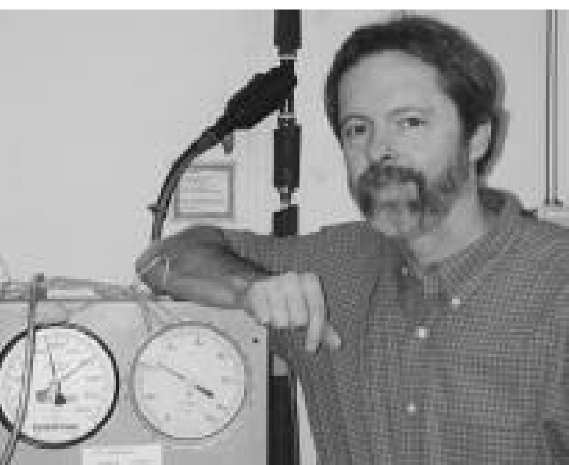(1950- ) American Experimental Geochemist
How are Earth’s deepest properties and processes known if they cannot be seen? The answer is to establish a high-temperature, high-pressure experimental research facility to simulate those conditions. One such facility from which have originated some of the best research, cutting-edge ideas, and elegant solutions is that of Bruce Watson at Rensselaer Polytechnic Institute, New York. Watson’s research can be described as “materials science of the Earth” because he studies the physicochemical processes of Earth materials under extreme conditions. His laboratory consists of solid-media, piston-cylinder apparatuses that can generate conditions up to 4 GigaPascals and 2,000°C, as well as internally and externally heated gas-medium pressure vessels that generate conditions up to 300 MegaPascals and 1,300°C. With these pieces of equipment, Watson and his group seek to understand the processes that distribute and redistribute chemical elements and isotopes in the solid deep Earth at scales ranging from micrometers to kilometers at depths up to 150 km. The results help to form a clearer picture of deep-Earth systems and the evolution of the mantle and lower crust.
The specific processes that Bruce Watson researches can be divided into three categories. The first is the movement (diffusion) of elements in melts and fluids and the permeability of rocks to those melts and fluids at high pressures and temperatures. The second is the partitioning or preferential concentration of certain trace elements (very low concentrations) among minerals, melts and fluids under lower crustal and upper mantle conditions. Finally, the behavior of minor minerals that concentrate trace elements are studied.
Bruce Watson was born on October 16, 1950, in Nashua, New Hampshire. He attended Williams College, Massachusetts, in 1968 and 1969, but transferred to the University of New Hampshire, and earned his bachelor of arts degree in geology in 1972. He then entered Massachusetts Institute of Technology as a graduate student and earned his Ph.D. in geochemistry in 1976. He was awarded a postdoctoral fellowship to the Carnegie Institution of Washington, D.C., for 1976 and 1977 before accepting a faculty position at Rensselaer Polytechnic Institute in Troy, New York, in 1977. He was chairman of the department from 1990 to 1995 and since 1995, he has been an institute professor of science. During his time at Rensselaer Polytechnic Institute he has been a visiting scientist at Macquarie University in Australia in 1981 and at the Max-Planck Insti-tut fur Chemie in Mainz, Germany, in 1984, as well as a participating guest at the Lawrence Liv-ermore National Laboratory, California, in 1999.
Bruce Watson in his high-pressure research laboratory at Rensselaer Polytechnic Institute
Watson has published some 105 articles in international journals and professional volumes. Many of these papers set new benchmarks in the understanding of lower crustal and mantle geochemistry. He received recognition for his research through numerous honors and awards from the profession. He became a fellow of the American
Academy of Arts and Sciences in 1996 and a member of the National Academy of Sciences in 1997. He received the Early Career Award from Rensse-laer Polytechnic Institute in 1982 and the F. W Clarke Medal of the Geochemical Society in 1983. He was awarded the Presidential Young Investigator Award from the National Science Foundation from 1984 to 1989. He was designated an R. A. Daly Lecturer by the American Geophysical Union in 1999 and was awarded the Arthur L. Day Medal by the Geological Society of America in 1998.
Bruce Watson has performed outstanding service to the profession throughout his career. He was the president of the Mineralogical Society of America in 1998 after having served on numerous committees in prior years. He was a councilor for the Geochemical Society in 1991 to 1994 and served on several other committees as well. He also served on several committees for the American Geophysical Union. He served as editor for Chemical Geology from 1991 to 1995 and for Neues Jahrbuch fur Mineralogie from 1988 to 1996. He was associate editor for Geochimica et Cosmochimica Acta from 1985 to 1988 and served on the editorial board from 1997 to 1999. He was also on evaluation committees for McGill University of Canada (1991), the Carnegie Institution of Washington, D.C. (1992 and 2000), Brown University, Rhode Island (1993), Harvard University, Massachusetts (1994 to present), Rice University, Texas (2000). He has also served on numerous panels for the National Science Foundation, U.S. Department of Energy, and the National Research Council.

